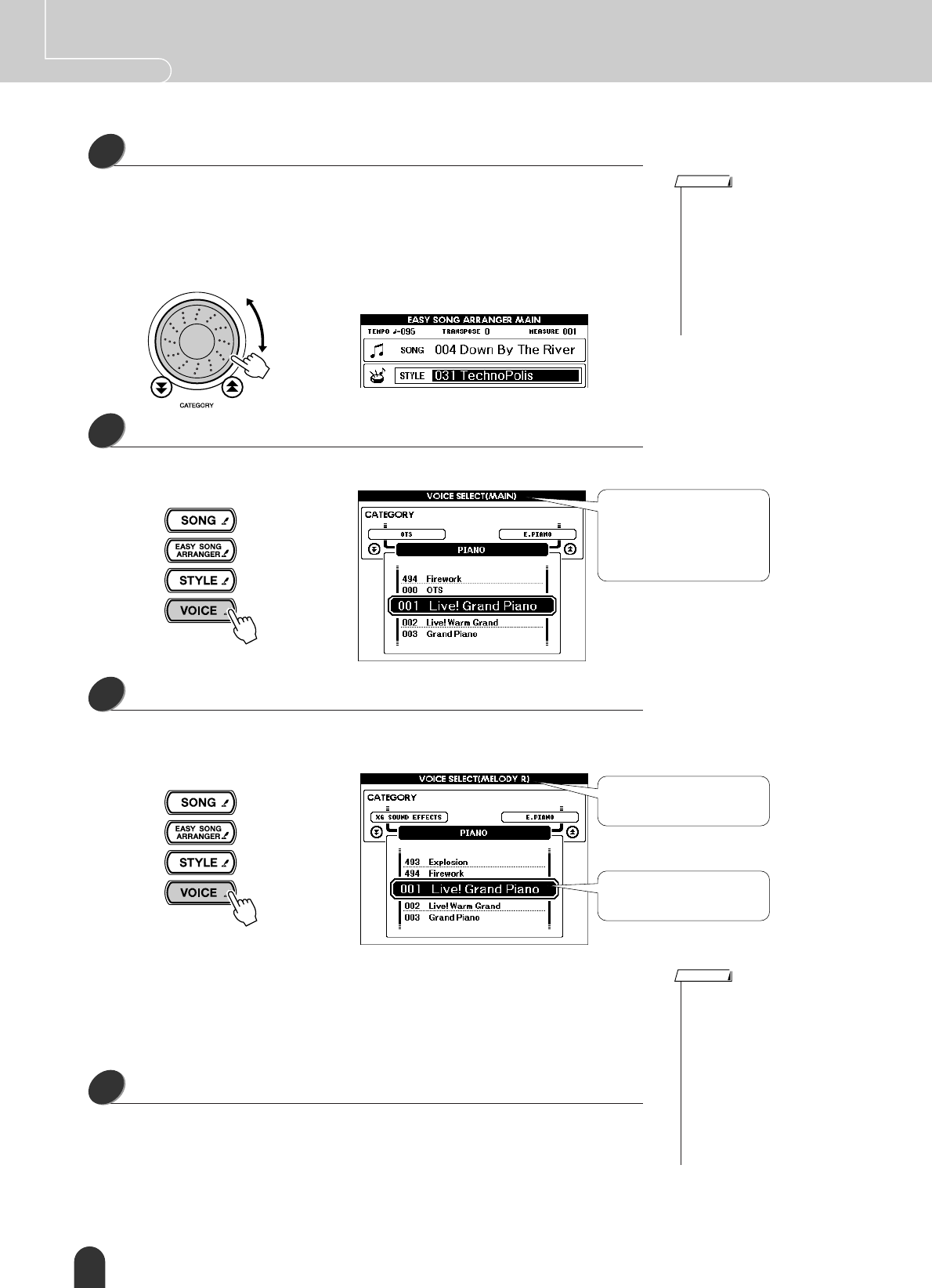
44 DGX-505/305 Owner’s Manual
Quick Guide Change a Song’s Style
Select a style.
Rotate the dial and listen to how the song sounds with different styles. As you
select different styles the song will remain the same while only the styles
change. When you have selected a suitable style move on to the next step while
the song is still playing (if you have stopped the song, start it again by pressing
the [START/STOP] button).
Press and hold the [VOICE] button for longer than a second.
Hold the [VOICE] button until the VOICE SELECT (MAIN) display appears.
Press the [VOICE] button three times.
The VOICE SELECT (MELODY R) display will appear so you can select the
Melody R voice.
Each time you press the [VOICE] button the section of the display title inside the
parentheses will change: MAIN → DUAL → SPLIT → MELODY R → MEL-
ODY L → MAIN …. The MAIN, DUAL, and SPLIT displays allow you to
change the keyboard voices, while the MELODY R and MELODY L display are
used to change the song melody voice.
Select a voice.
Use the dial to change the melody voice. As you select different melody voices
the song will remain the same while only the melody voice changes (if you have
stopped the song, start it again by pressing the [START/STOP] button).
You can save the Easy Song Arranger settings to SmartMedia memory. Refer to
page 78 for more information.
5
• Because the Easy Song
Arranger uses song data you
can’t specify chords by playing
in the accompaniment range of
the keyboard. The [ACMP ON/
OFF] button will not function.
• If the time signature of the song
and style are different, the time
signature of the song will be
used.
NOTE
6
Hold for longer
than a second
Each time you press the
[VOICE] button the Dual
Voice, Split Voice, Melody R,
and Melody L displays will be
selected in sequence.
7
VOICE SELECT (MELODY
R) display
The currently selected mel-
ody voice will be displayed.
Press three times
• The Difference Between MEL-
ODY R and MELODY L …
Songs are a combination of a
melody and an auto-accompani-
ment style. Normally “melody”
refers to the right-hand part, but
in this instrument “melody” parts
are provided for both the right
and left hands. MELODY R is
the melody part played by the
right hand, and MELODY L is
the melody part played by the
left hand.
NOTE
8


















